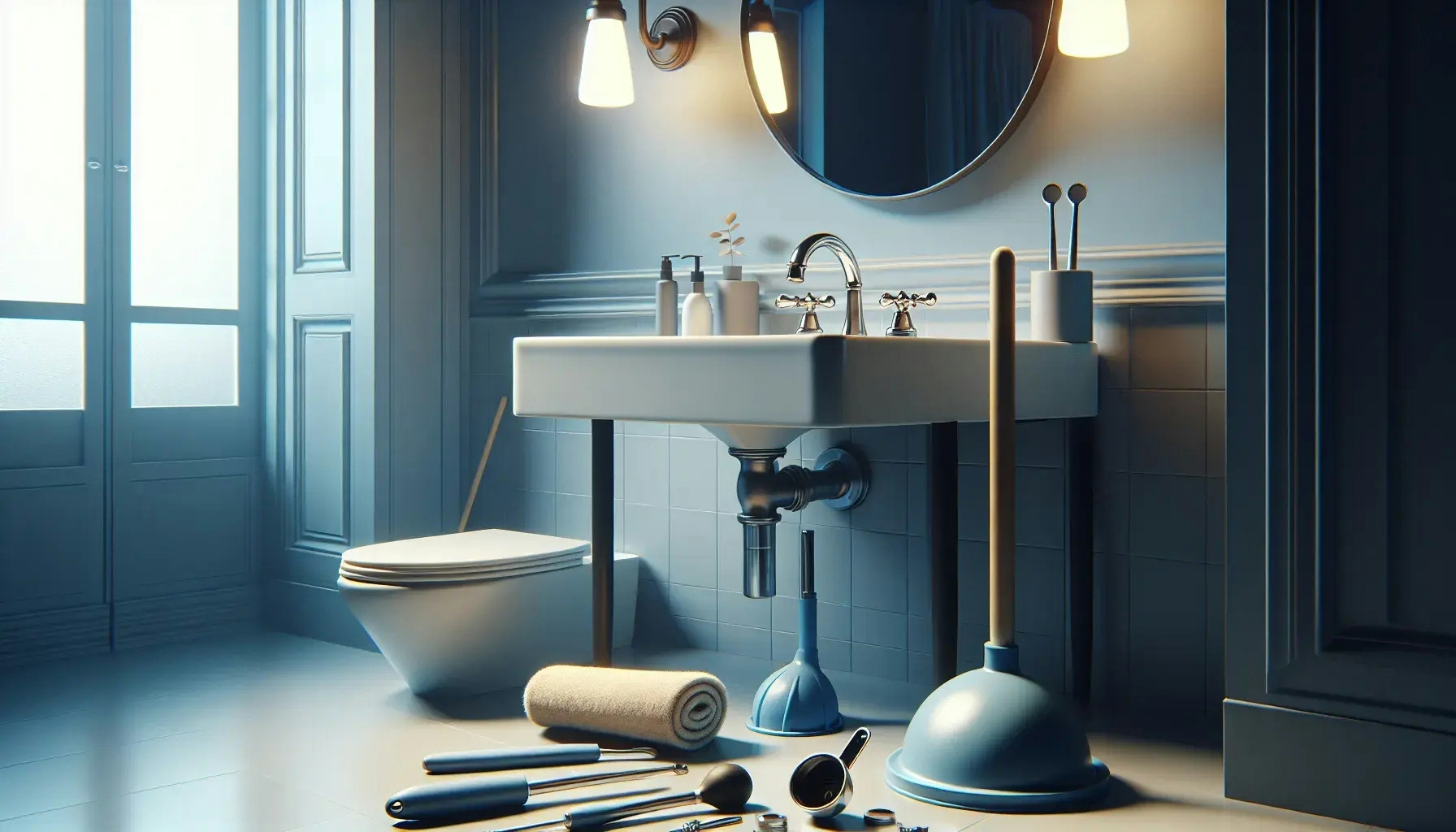A clogged bathroom drain can be a real nuisance. It's a problem that many homeowners face, and it can lead to unpleasant odors and slow drainage. But fear not, this comprehensive guide will walk you through the steps to unclog a bathroom drain. Whether you're dealing with a minor clog or a stubborn blockage, these methods will help you get your bathroom drain flowing smoothly again.
Understanding the Cause of Clogs
Clogs in bathroom drains often result from a buildup of hair, soap scum, and other debris. These materials can accumulate over time, gradually slowing the flow of water until the drain becomes completely blocked. Understanding the cause of the clog is the first step towards finding an effective solution.
Hair is a common culprit in bathroom drain clogs, especially in showers and bathtubs. As you wash, loose strands of hair can become tangled with soap and other debris, forming a mass that gradually blocks the drain. In sinks, soap scum and toothpaste can build up over time, leading to slow drainage or complete blockages.
Preventing these clogs from forming in the first place is always the best strategy. Regularly cleaning your drains and using drain covers to catch hair and other debris can go a long way towards keeping your drains clear. However, even with the best prevention strategies, clogs can still occur. When they do, it's important to know how to effectively unclog your bathroom drain.
Gathering the Necessary Tools
Before you start the unclogging process, you'll need to gather a few basic tools. These may include a plunger, a plumber's snake or hand auger, a bucket, and some rubber gloves. You may also need a screwdriver or wrench to remove the drain cover, depending on the design of your drain.
A plunger is a simple, yet effective tool for dislodging clogs. It works by creating a seal over the drain and using suction to dislodge the blockage. A plumber's snake or hand auger is a flexible rod that can be pushed down the drain to break up clogs. It's especially useful for stubborn blockages that can't be dislodged with a plunger.
Rubber gloves are important for hygiene and safety. Unclogging a drain can be a messy job, and you'll likely come into contact with dirty water and possibly some unpleasant odors. Wearing gloves will protect your hands and make the job a little less unpleasant.
Using a Plunger to Unclog the Drain
Once you've gathered your tools, you can start the unclogging process. Begin with the plunger. Place the plunger over the drain, ensuring that it forms a tight seal. If you're dealing with a sink, you may need to block the overflow hole with a rag or towel to ensure that the plunger can create a strong suction.
Once the plunger is in place, use a strong, steady pumping action to try to dislodge the clog. You may need to repeat this process several times to clear the blockage. If the water starts to drain, you've successfully dislodged the clog. If not, you may need to move on to the next step.
Using a Plumber's Snake or Hand Auger
If the plunger doesn't clear the clog, the next tool to try is a plumber's snake or hand auger. This tool is a flexible rod that can be pushed down the drain to break up the clog.
To use a plumber's snake, insert the end of the snake into the drain and turn the handle to feed the snake further into the drain. As you push the snake down the drain, it will break up the clog, allowing water to flow freely again.
If you're dealing with a stubborn clog, you may need to use some force to break it up. However, be careful not to damage your pipes in the process. If you're having trouble breaking up the clog, it may be time to call in a professional.
Cleaning Up and Preventing Future Clogs
Once you've successfully unclogged the drain, it's time to clean up. Dispose of any debris that you've removed from the drain, and clean your tools thoroughly. You may also want to clean the drain itself to remove any residual debris and prevent future clogs.
Preventing future clogs is just as important as dealing with existing ones. Regularly cleaning your drains and using drain covers to catch hair and other debris can help keep your drains clear. If you notice that your drains are starting to drain slowly, take action immediately to prevent a full blockage.
When to Call a Professional
While many clogs can be cleared with a little elbow grease and the right tools, some blockages may require professional help. If you've tried the methods outlined in this guide and you're still dealing with a clogged drain, it may be time to call a plumber.
Professional plumbers have the tools and expertise to deal with stubborn clogs. They can also identify and address any underlying issues that may be contributing to the problem. While calling a plumber can be more expensive than dealing with the clog yourself, it's often the best solution for stubborn blockages.
Wrapping Up: Steps to Unclog Your Bathroom Drain
Unclogging a bathroom drain can be a messy, unpleasant task, but it's often a necessary one. By understanding the cause of clogs, gathering the right tools, and following the steps outlined in this guide, you can effectively deal with most clogs. Remember, prevention is key, and regular maintenance can help keep your drains flowing smoothly. But when clogs do occur, don't hesitate to call in a professional if needed.

